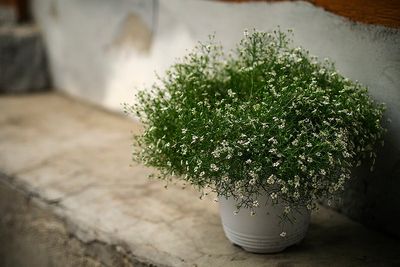Container Grown Baby’s Breath Plants
Have you tried growing Gypsophila in your garden without success? This is a possible issue if you planted into clay soil, as the tiny seeds of this plant cannot overcome and break through the heavy clay. Even amended soil only containing partial clay may be too heavy for these seeds. Of course, the solution is growing baby’s breath in a container. Gypsophila planted in the ground can become invasive in some areas, another good reason to grow this elegant plant in a container. Start Gypsophila in a pot using a light, well-draining soil mixture. If you grow succulents, you may already be familiar with how to amend the soil. For baby’s breath seeds, amend your regular potting mixture with coarse sand, such as builder’s sand (about one-third). You may also add perlite, vermiculite, or pumice if you have it on hand. This plant will grow in poor soil conditions as well, provided it’s not heavy. Seeds need air circulation for spouting. Sprinkle tiny seeds across the top and cover with a thin layer of sand. Mist or lightly water in, not moving the seeds. Keep the soil around them moist, but not too wet. In about 10 to 15 days, your potted baby’s breath will sprout. Keep the seedlings in a filtered sun location with mostly shade.
Potted Baby’s Breath Care
Locate your container outside when temperatures are above frost levels. Container grown baby’s breath looks great in a shady rock garden with other blooms and foliage or underneath rose bushes that provide shade to their soil. Single stems of baby’s breath in a container branch out and bloom. Remove them when spent for more flowers to grow. Add flowering branches to your indoor arrangements. Mature plants are somewhat drought tolerant but can benefit from an occasional light watering. This plant is also deer tolerant.
